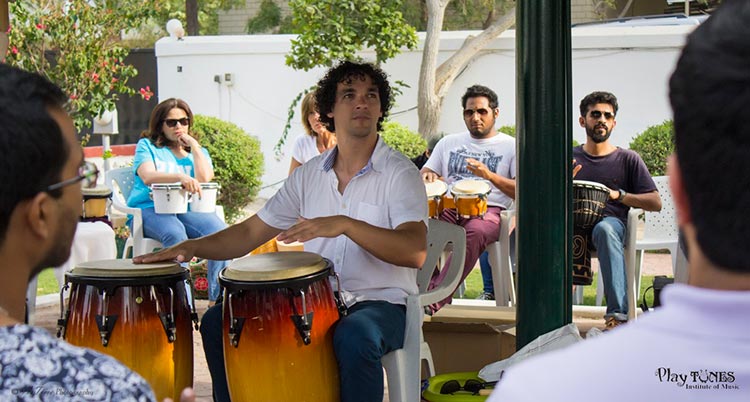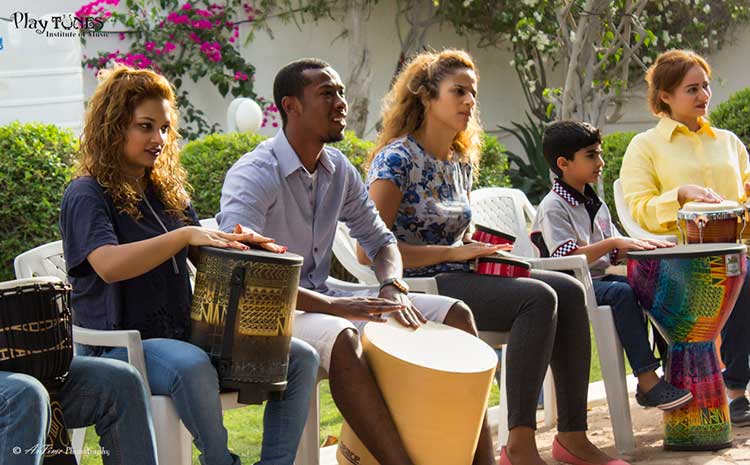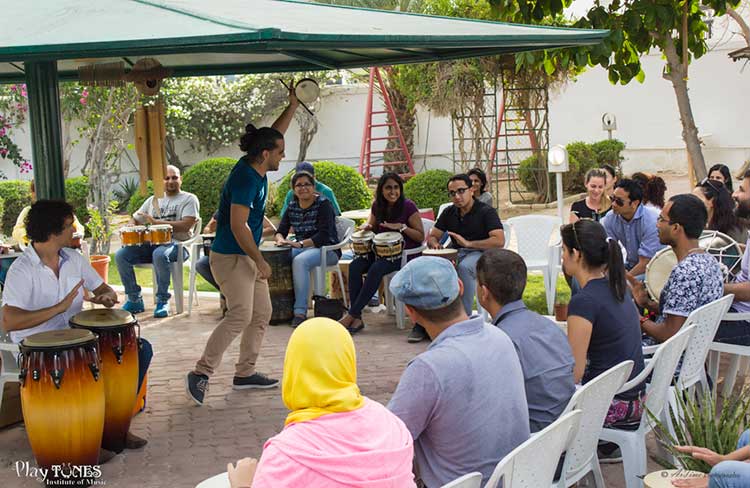Drumming. Together. Circle. That, in a capsule, is what a drum circle is all about.
For the uninitiated, a drum circle is any group of people playing drums and hand percussion – all in a circle! The stress is on ‘any group’, even complete novices, as the drum circle is an end in itself and not a preparation for a performance. There is no large objective or lofty ideal to gear up for a session of drum circle. It is just a simple need to seek rhythmic avenues for stress relief and experience the joy of beating drums in a group while feeling the rush of the beats resonating the joys of life.

Sharing rhythm and getting in tune with others is what drives a drum circle. It has been described as a celebration of life and community. As the name suggests, participants sit in a circle and play drums or hand percussion to create a swelling of group rhythm, with the facilitator guiding them in rhythm-based activities.
Classic Music and Arts Institute, which initiated this global activity in Muscat, a couple of months ago, calls it a therapeutic exercise. Highlighting the objective behind this rhythm project, Thanae Pachiyannaki of the Institute, states, “Drumming is a path of healing that guides us into experiencing the flow of our mind and emotions so we may grow to experience more about our soul,” pointing out that the word rhythm in Greek means to flow.


With a team of in-house musicians and music facilitators, the Institute has found the right groove among likeminded people in the capital. Participants claim that the experience is uplifting, helping them identify the rhythm of life and the calmness that it reassures. The fact that the hour-long sessions are overbooked is the proof of their success. As Thanae claims, “Our sessions are currently over booked and we have a waiting list for Fridays at 4! We have welcomed yoga teachers and other groups and everyone says they don’t know why, but for some reason after the session, they feel relaxed and happy!”
There is evidence to back the thought that teamwork and cooperative skills, needed in businesses and corporations, schools or other group organisations, are established naturally through drum circles. Explaining about the impact of the session, Thanae states: “While participating in a drum circle, the community rhythms that are produced is not dependent on any one member; each contributor has his/her own sound to add, creating a musical picture of the power of collaboration that can translate well into business environments, states a facilitator.”
An hour-long session of drumming does help to reduce tension, anxiety and stress. It has been proven to be effective in controlling chronic pain, while boosting the immune system and releasing negative feelings. The focus is on helping participants experience being in harmony with the natural rhythms of life.


The key word is together. And while stress relief has been established, it is the joy of creating rhythm together that has found a deep connection among likeminded people.
The Classic Music and Arts Institute’s Drum Circles are also available for corporate teams with 25 members to community groups of 500. Plans are currently on to do more such sessions at schools and organisations for people to release stress and enjoy. The team at the Institute has already conducted one for a group of over 500 underprivileged students from the government schools of Nakheel and Mutrah.
The Institute will shortly host Drum Circles as part of its Summer Camp programme for 2017; it will be conducted by percussionist Lennon Ruiz and Ernesto Raymat, from Havana, Cuba.


About Drum Circle:
The first drum circle originated in the United States in the late 1960s and early 1970s for any group of people who gathered informally. The settings ranged from beaches and parks to concert parking lots and festival grounds. One of the determining criteria for a drum circle is that the music is improvised and jointly created by the participants – that the music comes out as a group expression.
In some of the Western countries, drum circles have developed into two main types – community and facilitated or moderated. While the community circle is open to public and improvised on the go, the facilitated circles are directed by a specific person.

